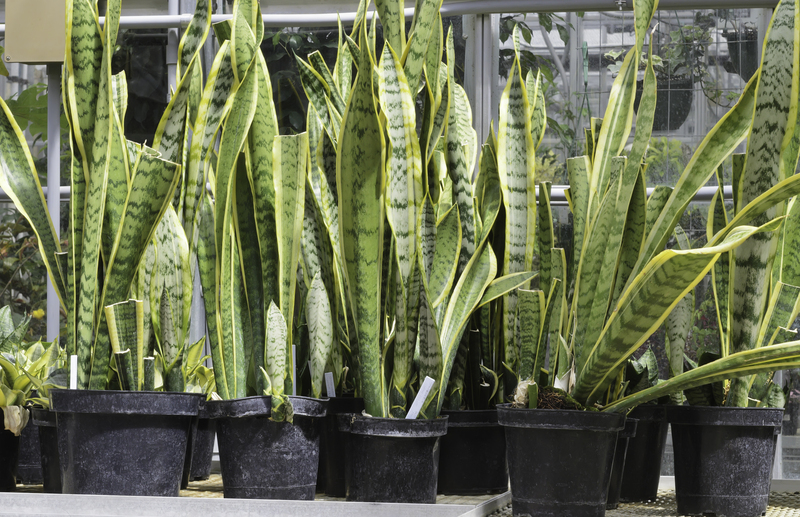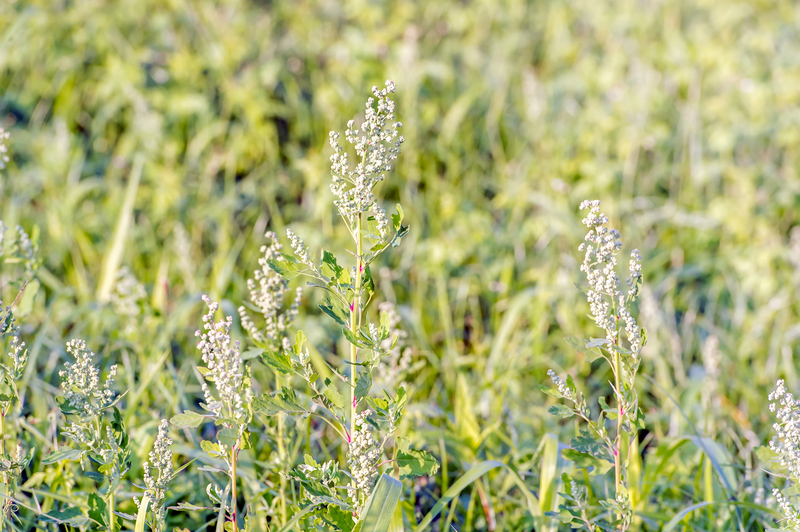Design a garden that welcomes canine adventures
Posted on 31/08/2025
Design a Garden that Welcomes Canine Adventures
Creating an outdoor space that is both visually appealing and tailored to your furry friend's needs can be a rewarding project for dog owners. Designing a garden that welcomes canine adventures allows you to combine beauty, functionality, and safety. In this comprehensive guide, we explore how to plan a dog-friendly garden that invites exploration and play while remaining gorgeous and green.


Table of Contents
- Benefits of a Dog-Friendly Adventure Garden
- Key Principles of Designing a Canine-Friendly Garden
- Choosing Safe and Durable Plants
- Areas for Play, Rest, and Exploration
- Designing Paths and Trails for Canine Fun
- Water Features and Cooling Spots
- Providing Shade and Shelter
- Safety Considerations for a Dog-Friendly Garden
- Low-Maintenance Landscaping Tips
- Creative Ideas for Canine Adventure Gardens
Benefits of a Dog-Friendly Adventure Garden
Designing a garden for canine adventures brings numerous advantages for both dogs and humans. A thoughtfully planned dog-welcoming garden offers:
- Physical exercise: Paths, tunnels, and open areas encourage running, jumping, and exploring, supporting your dog's health.
- Enrichment: New scents, textures, and features help reduce boredom and prevent destructive behavior indoors.
- Bond-building: Spending time outdoors together strengthens the bond between you and your dog.
- Garden beauty: With proper planning, a canine adventure garden can be both functional and aesthetically pleasing.
Key Principles of Designing a Canine-Friendly Garden
Observe Your Dog's Behavior
Before making changes, pay attention to how your dog uses the existing yard. Are there favorite sunbathing spots, digging zones, or patrol paths along the fence? Design your garden around these natural behaviors to keep your canine companion happy and engaged.
Balance Safety and Adventure
While adventure is the main theme, safety must always come first. Eliminate toxic plants, use non-toxic landscaping materials, and keep fences secure. The best dog adventure gardens combine excitement with peace of mind for owners.
Durability Matters
Dogs are tough on lawns and plants. Choose hardy, resilient varieties, and use materials that can withstand zoomies, digging, and muddy paws.
Choosing Safe and Durable Plants
Selecting dog-safe plants is crucial for a canine-welcoming garden design. Not all beautiful plants are safe for pets. Avoid popular but poisonous options like azaleas, lilies, foxglove, and oleander. Instead, consider these hardy, pet-friendly choices:
- Marigold (Calendula officinalis)
- Sunflower (Helianthus annuus)
- Camellia (Camellia japonica)
- Rosemary (Rosmarinus officinalis)
- Spider plant (Chlorophytum comosum)
- Fescue & buffalo grass: More durable than other lawn grasses
For shrubs and ground covers, try:
- Boxwood
- Hebe
- Miniature or creeping thyme
- Sedum
- Creeping Jenny
Always double-check a plant's toxicity with reputable sources before adding it to your pet-friendly garden.
Areas for Play, Rest, and Exploration
Diverse zones keep your dog excited and curious in the garden. Here are must-have canine adventure zones:
1. Open Spaces for Fetch and Frolic
- Leave a central lawn or open patch for throwing balls, running, and wrestling.
- Hard-wearing grass or artificial turf works best in high-traffic play areas.
- Consider dividing lawns from garden beds with sturdy stone or timber edging to prevent trampling.
2. Digging Pits and Sandboxes
- If your dog loves to dig, designate a corner for a sand or mulch dig-pit.
- Bury safe toys and treats occasionally for extra enrichment.
- Mark the boundaries with small fencing or decorative logs so your pup learns where to dig.
3. Scent Gardens
- Plant fragrant, edible herbs like mint, basil, and lavender for your dog to sniff.
- Scatter "sniffy" paths with wood chips, bark, or pine needles to encourage natural scent-tracking behavior.
4. Resting and Observation Spots
- Install cozy nooks with shelter, soft ground covers, or dedicated dog beds.
- Allow for elevation changes--low platforms or rocks for surveying the garden.
- Place these near shaded areas or under trees for comfort.
Designing Paths and Trails for Canine Fun
Dogs love to patrol boundaries and follow winding routes. Creating purposeful dog adventure trails prevents random wear on your lawn and directs energy productively.
- Mulch, pea gravel, or paw-friendly pavers: These are gentle on paws and easy to maintain.
- Weaving around flower beds and under shrubs: Offers interest and stimulation.
- Clear sightlines: Allow dogs to run safely and observe their territory.
Layout a continuous circuit around the yard's perimeter, plus "cross-country" routes through the center, so your canine explorer always has something new to investigate.
Water Features and Cooling Spots
Water sources are a central part of any dog-friendly garden design. Hydration and cooling options improve well-being, especially in warm climates.
- Shallow dog pools, splash fountains, or artificial streams: Ideal for cooling off and play, particularly for breeds that love water.
- Automatic refill bowls or bubblers: Ensure your pup never goes thirsty outdoors.
- Position water features in the shade and use non-slip surfaces for safety.
Always supervise water play, and ensure your chosen features have gently sloped sides for easy entry and exit.
Providing Shade and Shelter for Dogs
Dogs should always have access to shaded, sheltered spots for rest and protection from extreme weather. Shady areas are a necessity in every canine adventure garden.
- Trees and large shrubs: Natural, cool shade for lying and napping.
- Doghouses, pergolas, or shade sails: Supplement natural shade with weather-resistant constructions.
- Ensure shelters are well-ventilated, waterproof, and elevated to stay dry.
Planting climbers such as grapevines, wisteria, or honeysuckle (all non-toxic) along arbors or trellises adds summer leafy shade and vertical green interest to your dog-welcoming landscape design.
Safety Considerations for a Dog-Friendly Garden
Secure Fencing and Gates
- Ensure fences are high and secure enough for your breed.
- No gaps beneath or between panels: Plug holes and reinforce weak spots.
- Self-closing gates with secure latches are essential for preventing escape.
Avoid Common Hazards
- Toxic Plants: Always check plant safety before buying.
- Mulches: Avoid cocoa mulch, which is toxic to dogs.
- Pesticides & Fertilizers: Use pet-safe, non-toxic options only.
- Garden tools & chemicals: Store out of reach in locked areas.
Practical Design Tips
- Hideaway spots: Some dogs love private "dens" in quiet corners for napping or chewing treats.
- Non-slip surfaces: Use materials with good traction for fast-running paws.
- Visibility: Keep tall grasses and bushes trimmed so you can easily monitor your dog's activities from the house.
Low-Maintenance Landscaping Tips for Dog Lovers
Well-planned, dog-friendly gardens save you time and effort.
- Choose durable landscape materials: Flagstone, bricks, or compacted gravel resist wear and are easy to hose off.
- Opt for perennial, drought-resistant plants: They bounce back from a little rough canine handling.
- Install good drainage: Prevent muddy patches and puddles by sloping surfaces and using French drains or gravel beds.
- Use raised beds or sturdy edging: Protect delicate flowers and veggies from energetic play.
- Plan maintenance paths: Create access routes for you to water, prune, and clean up after your pet.
Tip: Embrace a natural, slightly wild look--dogs and gardens thrive when things aren't too manicured!
Creative Ideas for Canine Adventure Gardens
- Obstacle courses: Incorporate tunnels, low hurdles, and weave poles from natural materials.
- Stepping stones and log piles: These add fun balance challenges and visual interest.
- Hills and mounds: Create different levels for climbing, with safe footings.
- Interactive feeders or treat puzzles: Hide kibbles or treats to turn the garden into a treasure hunt zone.
- Wildflower patches: Mix native wildflowers for a changing seasonal landscape and pollinator benefits.
- Window into the world: Install a "peep hole" in the fence for dogs who love neighborhood-watching.
For the ultimate canine adventure garden design, involve your dog in the process--monitor which areas they gravitate toward and adapt your plans to their preferences. This ensures their outdoor haven is as unique as their personality!
Conclusion: Create a Backyard Paradise for Canine Enjoyment
Designing a garden that welcomes canine adventures doesn't mean sacrificing style or beauty--when thoughtfully planned, you can have a lush, inviting, and safe space the whole pack will love. From dog-friendly pathways and scent gardens to playful features and secure fencing, every element can be tailored to your four-legged companion's needs and instincts.
With these practical tips and creative ideas, your outdoor space can become a sanctuary that enhances both you and your dog's quality of life. Start planning your canine adventure garden today!
- Remember: Prioritize safety, enrich curiosity, and embrace playful design for the ultimate dog-friendly garden haven.

